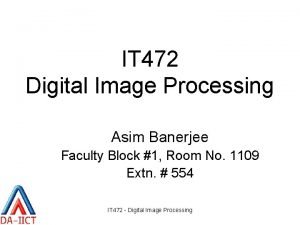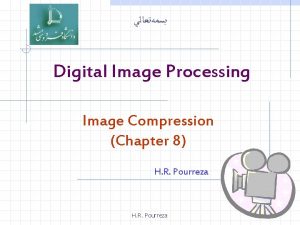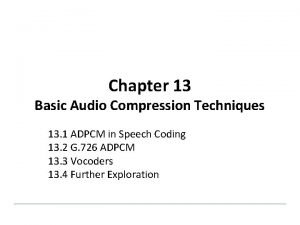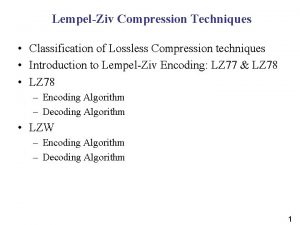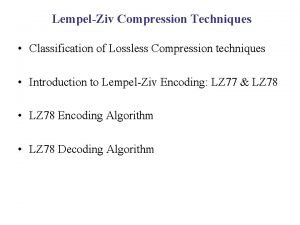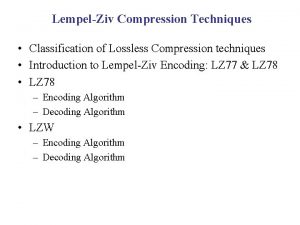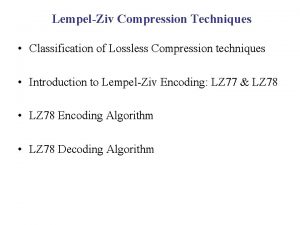Compression Techniques Digital Compression Concepts Compression techniques are






- Slides: 6

Compression Techniques

Digital Compression Concepts ● ● ● Compression techniques are used to replace a file with another that is smaller Decompression techniques expands the compressed file to recover the original data -either exactly or in facsimile A pair of compression/decompression techniques that work together is called a codec for short

Types of Codecs ● ● Codecs that upon decompression always reproduce the original file exactly are called lossless codecs Codecs that reproduce only an approximation of the original file upon decompression are called lossy codecs Codecs that take approximately the same amount of time to compress and decompress a file are referred to as symmetric codecs By contrast, codecs that feature simple fast decompression but significantly slower compression are called asymmetric codecs

Compression Encoding ● Compression is an encoding process that filters the original file in several successive stages

Codec Methods ● ● ● Syntactic encoding (also called entropy encoding) methods attempt to reduce the redundancy of symbolic patterns in a file without any regard to the type of information represented Semantic methods consider special properties of the type of information represented to reduce nonessential information in a file Hybrid methods combine both syntactic and semantic methods

Compressing Text and Numerical Data Lossless Syntactic Methods ● Run-Length Encoding (RLE) – – ● Huffman Codes – – ● looks for repeated sequences of symbols widely used for fax (facsimile) transmissions exploits frequency distribution of symbols in a source adaptive Huffman coding builds its own frequency tables rather than use predefined statistics Lempel-Ziv-Welch (LZW) compression – – based on recognizing patterns of strings in original file fast and yields good results (50% typical reduction)



